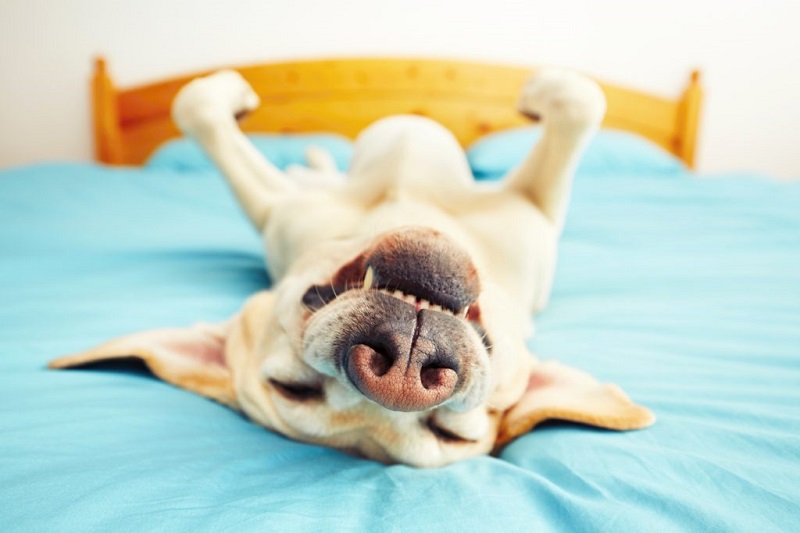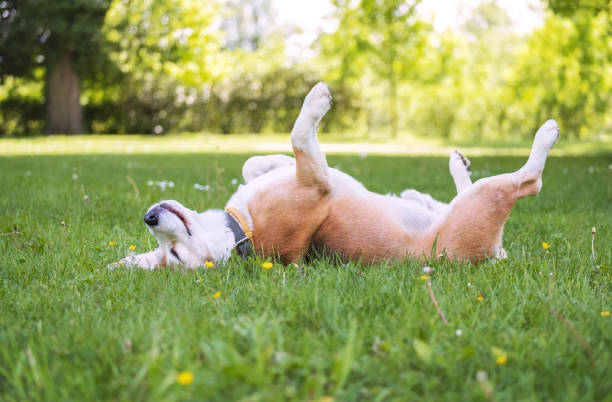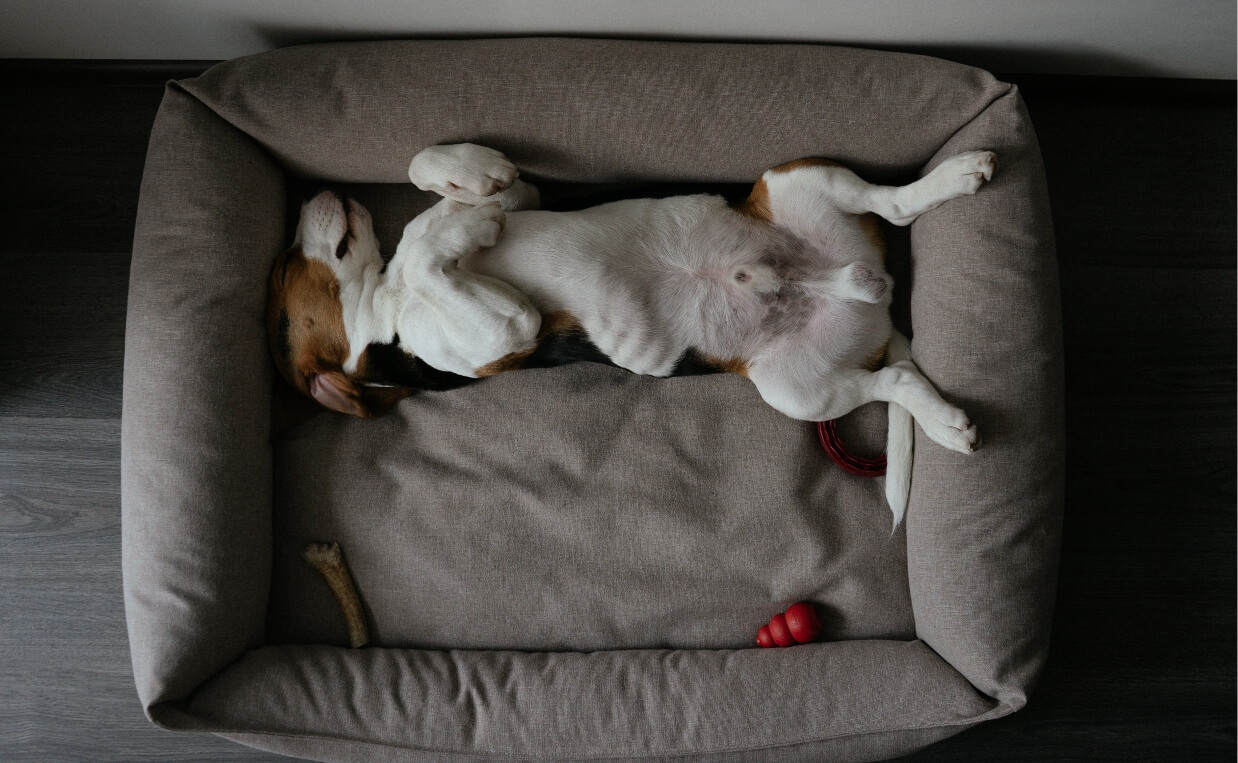Dog Sleeping On Back With Paws Up

Sunlight streamed through the living room window, illuminating dust motes dancing in the air. A gentle snore punctuated the quiet morning. On the plush dog bed, nestled amidst a pile of well-loved toys, lay Buster, a golden retriever mix, fast asleep on his back, all four paws reaching skyward like tiny, furry supplicants.
This seemingly simple image – a dog sleeping on its back with paws up – sparks joy and curiosity. While amusing, this posture can offer insights into a dog's personality, environment, and even its health, prompting a deeper understanding of our canine companions.
The Upside-Down Dog: What Does It Mean?
The prone-supine position, as some vets playfully call it, is more than just an adorable quirk. It often indicates a feeling of profound safety and relaxation.
Dogs expose their vulnerable belly only when they feel completely secure in their surroundings. A dog sleeping this way trusts their environment implicitly.
Dr. Emily Carter, a veterinary behaviorist at the American Veterinary Medical Association (AVMA), explains, "When a dog sleeps on its back, it's essentially saying, 'I have no worries here. I'm comfortable and protected.'"
A Matter of Comfort and Trust
For a dog to sleep on its back, it requires a certain level of physical comfort. The surface needs to be soft and supportive, allowing them to fully relax their muscles.
Consider Buster’s dog bed, which is filled with memory foam. This provides cushioning and support, encouraging him to let go completely.
But physical comfort is only part of the equation. The emotional component, trust, plays an equally vital role.
A dog won't assume this vulnerable position unless they feel safe from threats. This safety stems from a strong bond with their owners and a peaceful home environment.
It is important to remember that if the dog is overweight, sleeping on their back can put undue pressure on their lungs and diaphragm making breathing difficult.
Decoding Dog Sleep: Body Language and Environment
A dog's sleeping position can also provide clues about the temperature. Dogs often sleep on their backs to cool down.
Exposing their belly allows for better heat dissipation. This is particularly true for breeds with thick fur coats.
Beyond temperature regulation, observing other aspects of a dog's body language during sleep can be informative. Twitching paws might indicate dreaming, while soft whimpers could be a sign of processing daytime experiences.
The Canine Sleep Center, a research organization dedicated to understanding dog sleep patterns, has conducted studies revealing that dogs experience similar sleep cycles to humans, including REM sleep.
Breed and Individual Personality
While any breed can sleep on its back, it's more commonly observed in certain types of dogs. Laid-back breeds, such as Golden Retrievers and Labrador Retrievers, may be more inclined to adopt this relaxed posture.
However, individual personality plays a crucial role. Some dogs, regardless of breed, are simply more easygoing and trusting than others.
Buster, being a mix of several breeds with a generally friendly disposition, exemplifies this. His inherent trust and affection for his family likely contribute to his comfortable sleeping habits.
When to Be Concerned
While a dog sleeping on its back is generally a positive sign, there are instances where it could indicate a potential problem.
If a dog suddenly starts sleeping in this position after a period of not doing so, it might be worth consulting a veterinarian to rule out any underlying medical issues, such as abdominal discomfort.
Also, if the dog seems to be struggling to breathe while in this position, it's essential to seek immediate veterinary attention.
The American Animal Hospital Association (AAHA) recommends regular check-ups to monitor a dog's overall health and address any concerns promptly.
Creating a Sleep-Friendly Environment
Creating a comfortable and safe environment is crucial for promoting restful sleep in dogs. This includes providing a comfortable bed in a quiet, secure location.
Maintaining a consistent routine can also help reduce anxiety and promote relaxation. Regular walks, playtime, and feeding schedules contribute to a dog's overall sense of well-being.
Avoid disturbing a dog while it's sleeping unless absolutely necessary. Like humans, dogs need uninterrupted sleep to recharge and maintain their physical and mental health.
More Than Just a Nap
Seeing Buster asleep on his back with paws up never fails to bring a smile. It's a reminder of the deep bond we share and the trust he places in us.
It's also a lesson in observing and understanding the subtle cues our dogs give us. These cues tell us about their feelings and needs.
By paying attention to these cues, we can create a home where they feel safe, loved, and comfortable enough to let their guard down, even in their sleep.
So, the next time you see a dog sleeping on its back, paws up, remember that it's more than just a cute pose. It's a testament to the power of trust, comfort, and the unconditional love that exists between humans and their canine companions.







:max_bytes(150000):strip_icc():format(webp)/why-do-dogs-sleep-on-their-backs-456953088-2000-563d5e11df104e718698d8dc50055d52.jpg)


:max_bytes(150000):strip_icc()/GettyImages-687786353-64cc1c3d4d244e1c800bd18003e45438-a0b14438a25444eeb85da0733e9ca05a.jpg)




/GettyImages-867302186-bb5f891abaad4c378b8b71c54c8940dd.jpg)


